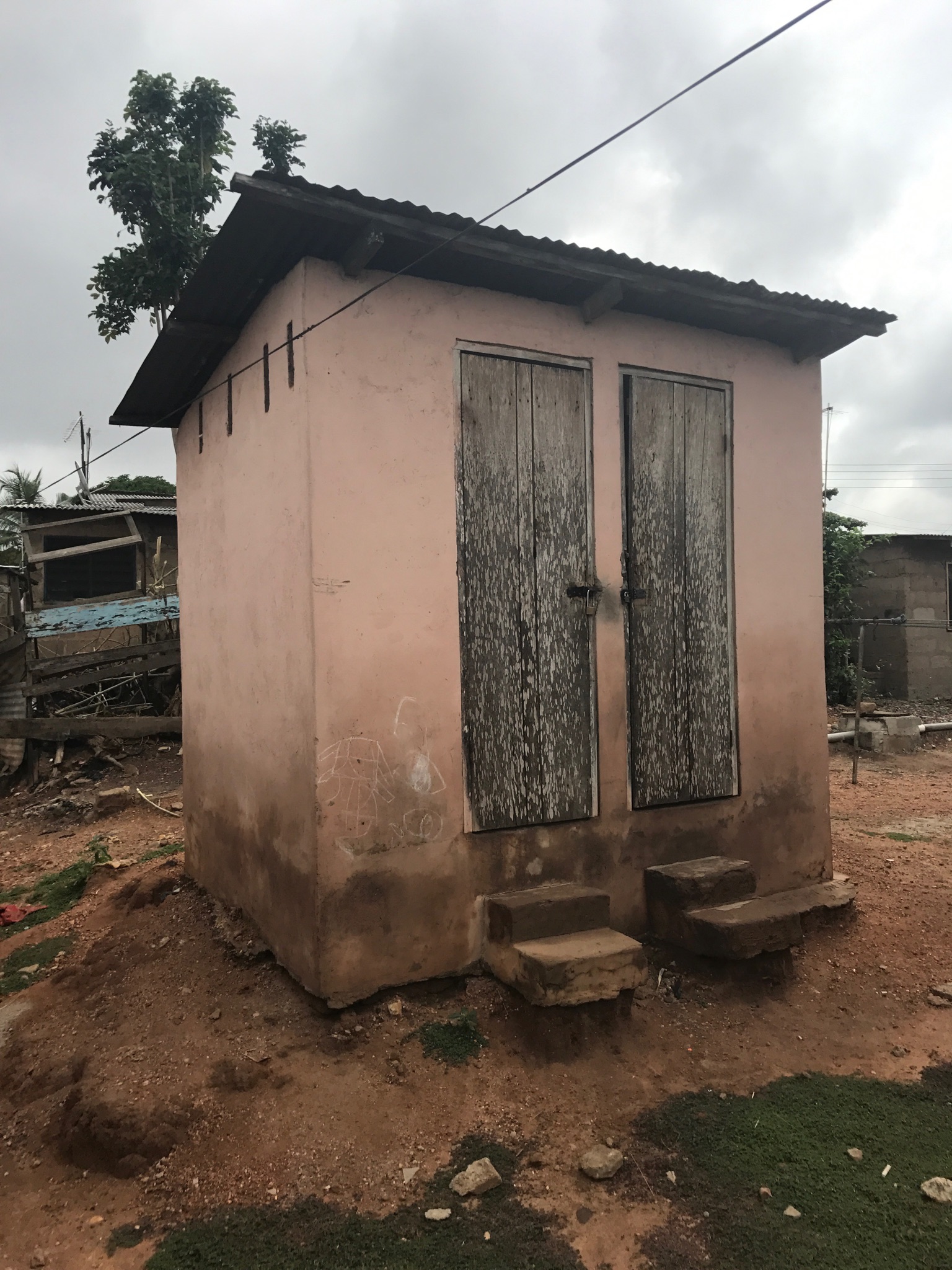
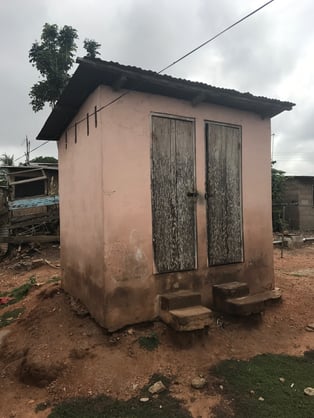
The morning started out similar to yesterday by meeting key people involved with sanitation solutions, but we were not prepared for how the day would end.
We arrived at the International Water Management Institute where we had an overview of the sanitation practices in Accra. Some interesting statistics from Accra census data:
34% of the population uses public toilets which can be any of the following types:
Fortunately, this year a Minister of Sanitation was established in Ghana with the responsibility to resolve sanitation problems. However, the people we spoke to said the position could be eliminated as fast as it was created when new government leaders are voted into office. This is a very common problem with their political system.
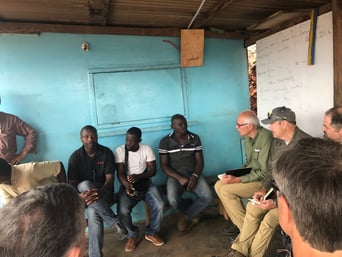
From here, we went to an “Association” of pit emptiers. Basically, individuals buy used vacuum trucks from developed countries to start a business emptying pits. The association has over 65 trucks/drivers and they all park in this same area. We sat down with Ibrahim Appaih, Vice President of the Association, to discuss their business.
One of their biggest issues is driving their full trucks two hours away to dump them. When we discussed the Gates Project, Ibrahim was very excited as it would minimize his travel time (fuel being his biggest cost) and reduce his maintenance costs on some very old trucks if they could treat the waste in their parking lot.
While we were talking, Ibrahim got a call to empty a pit from an apartment block. We followed the septic truck and witnessed the pit extraction.
It was a basic pit latrine and didn’t take very long to empty. It wasn't a flush toilet, so the solids content was higher than our septic tanks in the U.S. They poured three or four buckets of water into the pit to help pump it out. As they were pumping, a neighbor came over and asked them to pump his pit out. The whole process could be more organized and streamlined but would take some business savvy. We then drove back to the “Association” and said our thank yous and goodbyes.
From there we went to the settlement of Nima. Nima is known for its poor living conditions. It is primarily Muslim and even more congested than anything we’ve seen. It took 30 minutes to drive 2 miles because of the narrow roads, cars and foot traffic on the streets.
On the south end of Nima we stopped and visited several toilets. Most of these were pay toilets that cost about a penny to use. The attendant would give the person one piece of newspaper to wipe unless you were a practicing Muslim and then you brought a small plastic kettle filled with water to wash after going. The newspaper was placed in a bucket to burn later to heat water for bathing, etc.
The living conditions in Nima are hard to understand as cows were kept in small pens next to the public bathrooms.
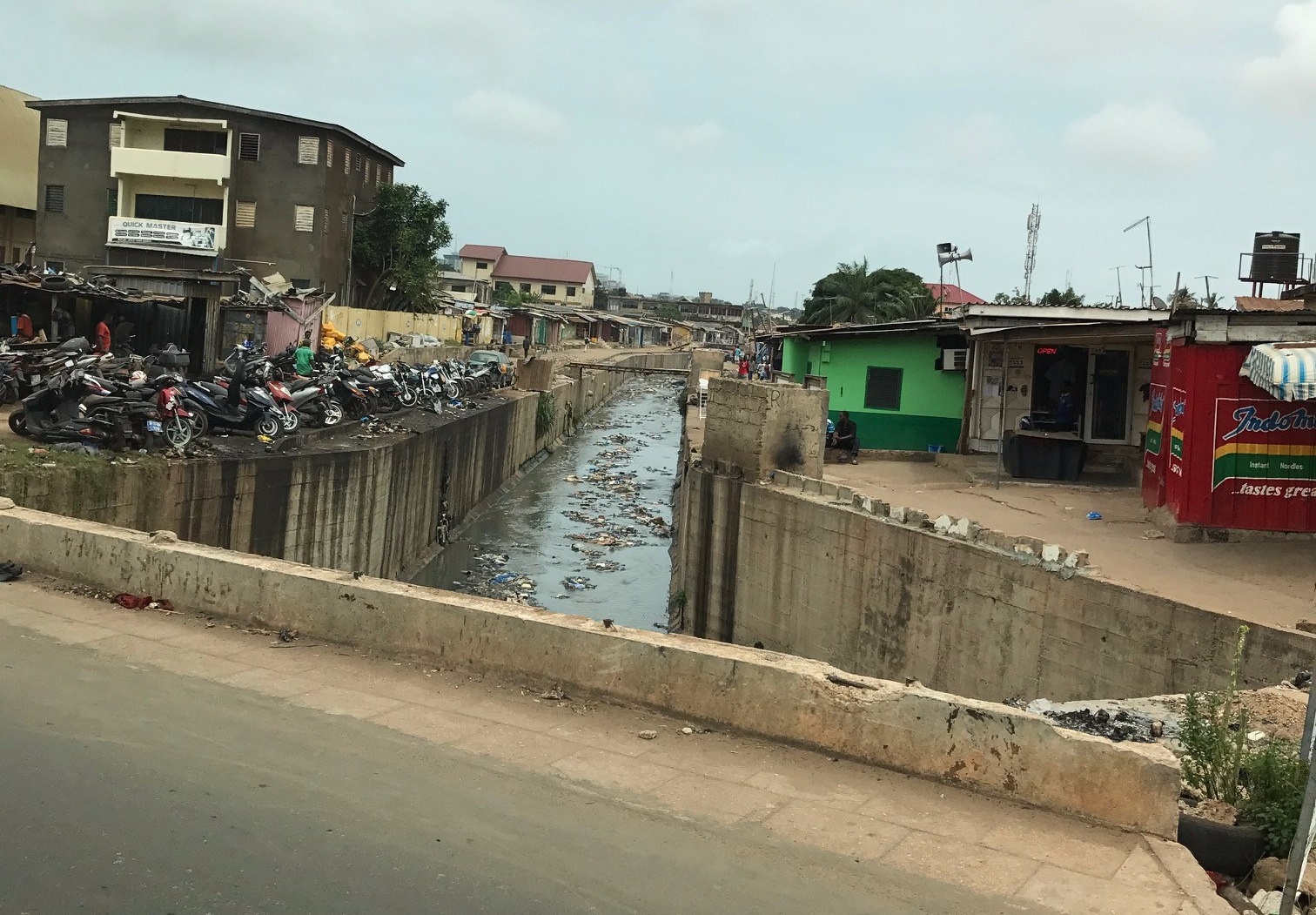 Trash is everywhere and it seemed no one had jobs unless they were selling something on the street. Typical housing was a single room shack with who knows how many people in it. The shacks were close together with tin roofs and sometimes dirt floors. It is very hard to imagine living like this in the rainy season!
Trash is everywhere and it seemed no one had jobs unless they were selling something on the street. Typical housing was a single room shack with who knows how many people in it. The shacks were close together with tin roofs and sometimes dirt floors. It is very hard to imagine living like this in the rainy season!
We then rushed to our appointment at Lavender Hill Treatment Plant. It was started in 2016 to stop septic trucks from dumping raw sewage into the ocean, a long-standing practice. The treatment plant is on the ocean, next to a river where sewage was previously dumped. The treatment plant got its name “Lavender” from the odor around the ocean.
The plant is government subsidized and the trucks pay $5 to dump their waste. The treatment plant discharges the clean effluent to the river but the garbage (yes garbage!) from upstream has filled the river in so it is currently being dredged to allow for better flow out to the ocean.
Our last stop for the day was in the settlement of Old Fadama, the nickname of Sodom and Gomorrah. Even though our purpose was to look at bucket style bathrooms, that isn’t what we will remember due to the horrific living conditions these people endure. The amount of trash was unimaginable, the stench along the river was only overshadowed by the burning of trash and the sound of music blaring from the one room shacks which made it hard to focus – definitely sensory overload!
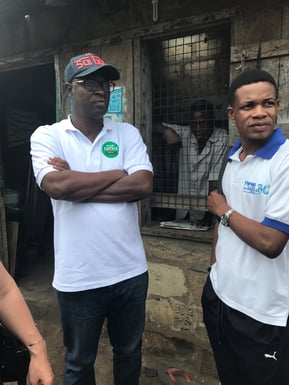
Two village leaders kept us safe as they guided us through a maze of narrow paths and through several shacks. There were many hopeless sights, but hearts sank as we watched little kids play in the dirt knowing they don’t have a chance to live up to their full potential because of where they were born. I now know why the Gates Foundation brought us here, it wasn’t just to find ways to get this technology to fit in a dysfunctional business environment, but it was more about making the emotional connection required to commit to doing something great for people you don’t know or ever will.
This is the hardest blog we had to write as there aren’t words to adequately describe the hopelessness we witnessed today. One thing is for sure, we understand this is a huge crisis and hopefully we can be part of the solution, even if it is in a small way!
In studies funded by the Bill & Melinda Gates Foundation, they estimate that in some areas less than 2% of the fecal waste is being properly treated with the rest being released to the environment untreated.
We might not get an update out for Thursday. We will spend the day in the field and then catch a red-eye flight to Uganda, arriving Friday morning for another day in the field!
Headquarters and Service Center
Located outside Green Bay, WI
707 Ford Street
Kimberly, WI 54136
920-733-4425
OptiFlow Design and Build Center
1002 Truman Street
Kimberly, WI 54136
920-733-4425
Burnsville Service Center
12265 Nicollet Avenue
Burnsville, MN 55337
952-444-1949
Grand Rapids Service Center
26489 Industrial Blvd
Cohasset, MN 55721
952-444-1949
© Copyright 2024. Crane Engineering. All Rights Reserved. Privacy Policy.